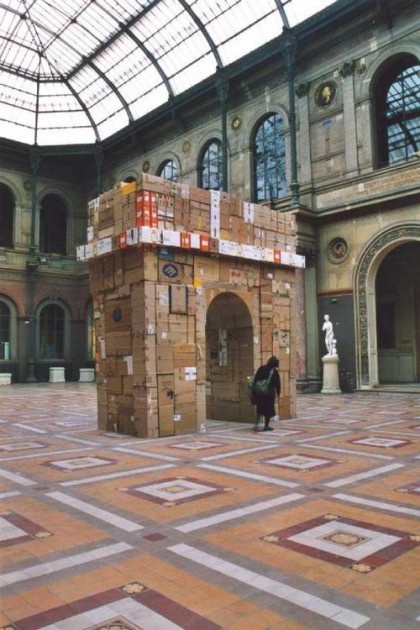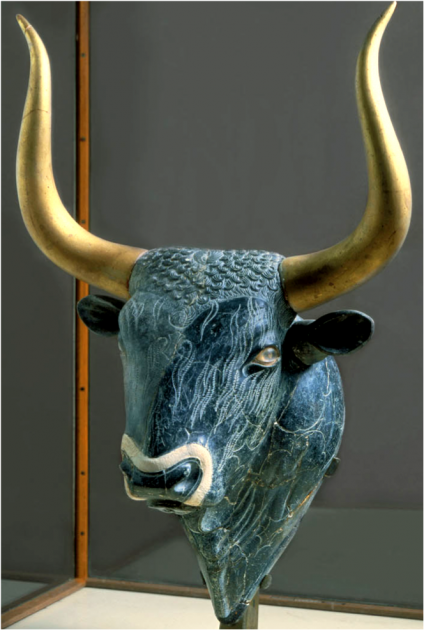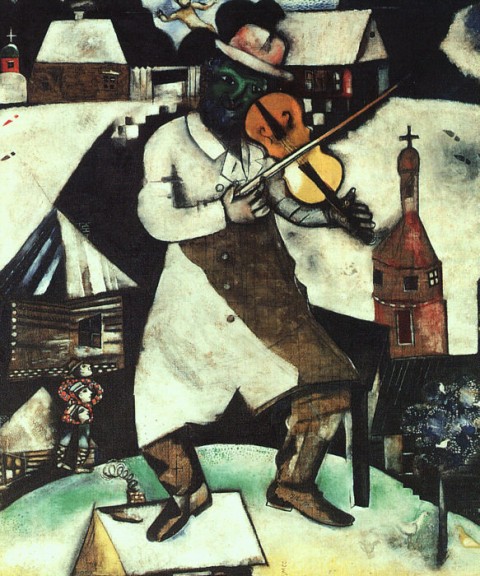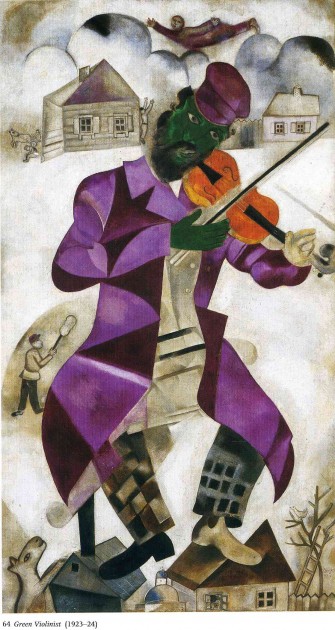Wednesday, December 19th, 2012
Technology and Triumphal Arch Parallels: Dürer and Debombourg

Baptiste Debombourg, Triumphal Arch, 2001. Cardboard boxes, glue, strings, scotch tape. Height 5.3 m (approx 17.38 feet)
This morning one of my students shared with me a Tumblr page with images of Debombourg’s Triumphal Arch, which is largely comprised of cardboard boxes. My student commented that this disposable monument reminded him of the temporary triumphal arches that we discussed in our class on colonial Brazilian art.1 I am curious as to whether Debombourg recycled used boxes for his construction. If he did, I think this would be an interesting contrast between our environmentally-conscious society and the colonial conquerors who initially perceived Latin America to be a land of abundant, limitless resources.
Anyhow, by coincidence, later this morning I came across another triumphal arch in the new art history textbook that I am reading (edited by Kim W. Woods). The text discusses the monumental arch that Dürer created for Emperor Maximilian (see below). This huge arch was printed on paper using 192 woodblocks, and was intended to be a wall decoration, kind of like a substitute for a tapestry or wall painting.

Albrecht Dürer, "Arch of Emperor Maximilian," 1515-17, colored woodcut. 357 x 295 cm (approx. 11.7' x 9.67')
Although these two arches are very different for a lot of reasons, I can’t help but think about how these arches have some interesting similarities. The both are created on a monumental scale. They both are “constructed” works of art, either with physical boxes or with the woodblocks which comprised Dürer’s final print. Even the small print on some Debombourg’s boxes has an interesting parallel with Dürer’s print: the latter has complicated Latin inscriptions which would have been hard to read, not to mention the complex compositions which would have been equally difficult to view.2
Curiously, both works of art have an interesting element of “reproducibility.” Dürer’s arch was originally printed in 700 sets, and later was reissued in more than 300 sets by one Archduke Ferdinand, one of Maximilian’s grandson.3 Ferdinand’s son Charles, in turn, also reissued sets of the arch. Dürer was able to reproduce his work through the relatively-new technological invention of the printing press. Likewise, Debombourg’s arch has been similarly “reproduced” over and over through blogs, tweets, and Tumblr “likes” (for starters, just look at the list on the Tumblr site that I included above).
It is interesting to think about how the Internet has assumed a “reproducibility function” for art, a function which for a long time was partially the responsibility of the printing press. Artists no longer become famous through distributing physical copies (i.e. prints) of their art. Instead, artists and viewers can place images on the Internet, and let those images (or the links to those images) reproduce themselves. Lately, when I have visited a museum gallery, I have been struck by how many people (including myself) are taking images of art with their cellphone cameras. It is phenomenal to consider how many works of art are “reproduced” via digital images each day.
Considering the widespread fame which Dürer achieved in his lifetime with physical copies of his prints, one can only imagine what mind-boggling fame he might have achieved if he lived in the Internet age. And I would bet that Dürer would have relished every moment of it.
1 Although we don’t have examples of temporary triumphal arches from Brazil, there are some descriptions that exist in documents. We can learn a little about how temporary triumphal arches appeared in Latin America by looking at a Spanish American painting of a viceroy “entrada.” Look on the far right side of Melchor Pérez Holguín’s, “The Entrance of the Viceroy Morcillo into Potosí,” 1716.
2 Kim W. Woods, ed., “Art and Visual Culture, 1100-1600: Medieval and Renaissance,” (London: Tate Publishing), 181-82.
3 Ibid., 181.



